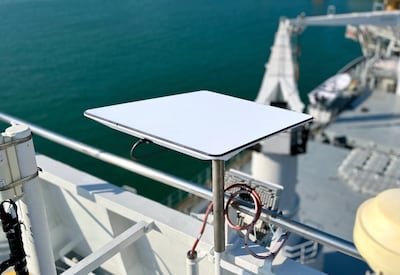Starlink's satellite internet service can now be accessed in Oman, chief executive Elon Musk said on his social media platform X, joining Yemen and Qatar among countries in the Middle East where the company's service is available.
According to Starlink’s website, Kuwait, Bahrain and Jordan are expected to have Starlink’s high-speed, low-latency internet service owned and operated by Mr Musk's SpaceX at some point in 2025.
The company's projected service map says availability in Saudi Arabia and the UAE are “pending regulatory approval".
A document posted to the UAE's Telecommunications and Digital Government Regulatory Authority (TDRA) website shows that Starlink was granted a regulatory licence in 2024 that will last about 10 years, specified for “maritime satellite internet services”.
The company says its low-Earth orbit (LEO) satellites and connectivity devices have given more than 3 million people in at least 100 countries and territories the ability to connect to high-speed internet.

Starlink’s standard antennae devices, which connect to the company’s LEO satellites, weigh less than 3kg, contain no moving parts and can withstand strong winds.
Unlike traditional communications satellites, which orbit Earth in the range of 20,000km to 35,000km, Starlink’s thousands of satellites orbit at about 550km, significantly quickening internet speeds and cutting back on latency.

In contrast to 5G or broadband internet, satellite internet does not depend on mobile towers or high-speed data lines for connectivity, making connection possible in remote areas. LEO satellites have also proven effective in areas of conflict where internet infrastructure has been destroyed.
Morgan Stanley estimated that the satellite broadband market could be worth as much as $400 billion by 2040 – about 40 per cent of the estimated $1 trillion generated by the global space industry that year.
Starlink is widely considered to be the leader in the sector, with various estimates showing that the company’s constellation consists of at least 7,000 LEO satellites.
Some experts have gone as far as to suggest that constellations of more than 50,000 active LEO satellites could be orbiting overhead within the next decade.

